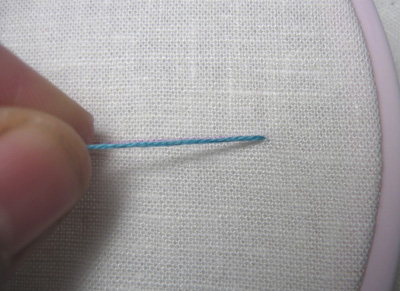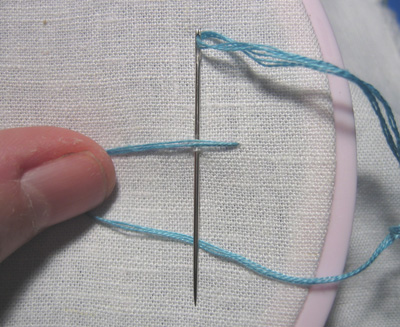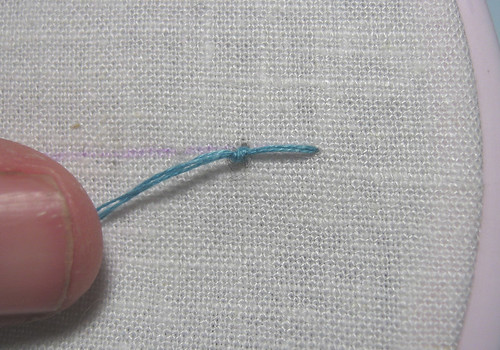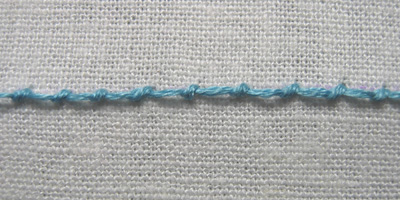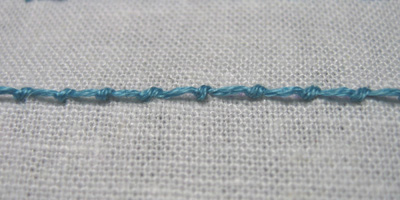So today we have coral stitch. Also called beaded stitch, German knot stitch, or snail trail, this stitch can be used singly to outline shapes, or worked in rows spaced closely together as a filling stitch, in which case you’ll want to position the knots between those in the previous row. Here’s how you do it:
Bring your thread to the front on the righthand side of your line and lay it along the line for a short distance, holding it in place with your thumb.
Keep holding the thread and take a small stitch from just above the thread to just below it. Your thread will form a loop and your needle should stay inside that loop.
Keeping your thread taut, begin to pull it through until a knot forms.
Lay your thread along the line again and take another small stitch in the same way. You can space your knots at whatever distance you like, just keep them evenly spaced as you continue along the line. When you come to the end take your thread to the back and end off (weave threads into back). That’s it.
Here’s a side view so you can see the knots better.
For a filling stitch, complete another row parallel to the first, spacing your knots so they fall in the open spaces between the knots on the first row. Then continue to alternate the knots as you fill your shape. Use a second color if you want a striped effect.
As always, past Stitch School posts can be found in the sidebar to the right.
Now, fabric. I mostly work on vintage stamped-for-embroidery projects so whatever fabric they’re printed on is what I use. That’s either linen or cotton and it usually has a weave that you can see. As a general rule, if you’re doing stitches that involve counting threads then you’ll want a fabric with threads that are easy to see—like linen or heavy cotton. If you’re doing a lot of outline, lazy daisy, satin stitch, or french knots, then a fabric with a finer weave (a finer linen or smooth cotton) will work better. Smooth cottons work best for iron-on transfer patterns, too. I like fabrics with some crispness as they’re easier to handle and stay in the hoop better without stretching and pulling. When you wash your finished project, that stiffness will usually wash out.
Many times, you’ll be embroidering linens that are designed and sold for that purpose—napkins, pillowcases, tea towels, baby bibs. In other words, the end product determines what fabrics you’ll be using. I buy my tea towels from Embroider This, and they have lots of other blanks for embroidering, too. And I often recycle parts of linens that I’ve used for other projects—like if I’ve used the embroidered edge of a pillowcase for a pillow, I save the rest to cut up and use for other things. You can embroider on just about anything so try some different fabrics and see what you like best.
This post has moved to it’s new home on the Stitch School blog. If you’d like to leave a comment please do so here.
هذه دعوة لكل بنات الجزائر خاصةة وكل البنات العربيات عامةةة
:daisy::daisy::daisy:
و لكن موضوع في القمة
بارك الله فيك حنان
